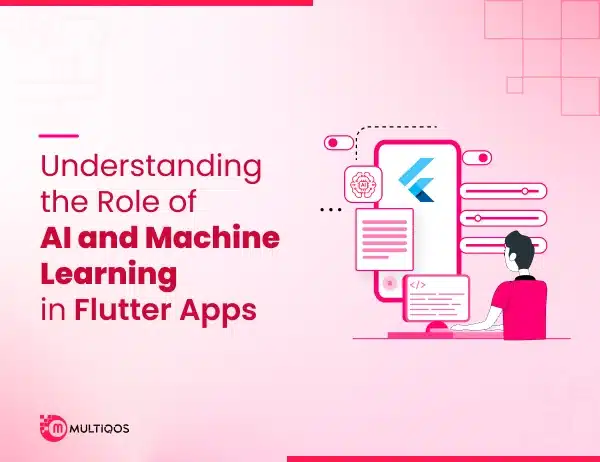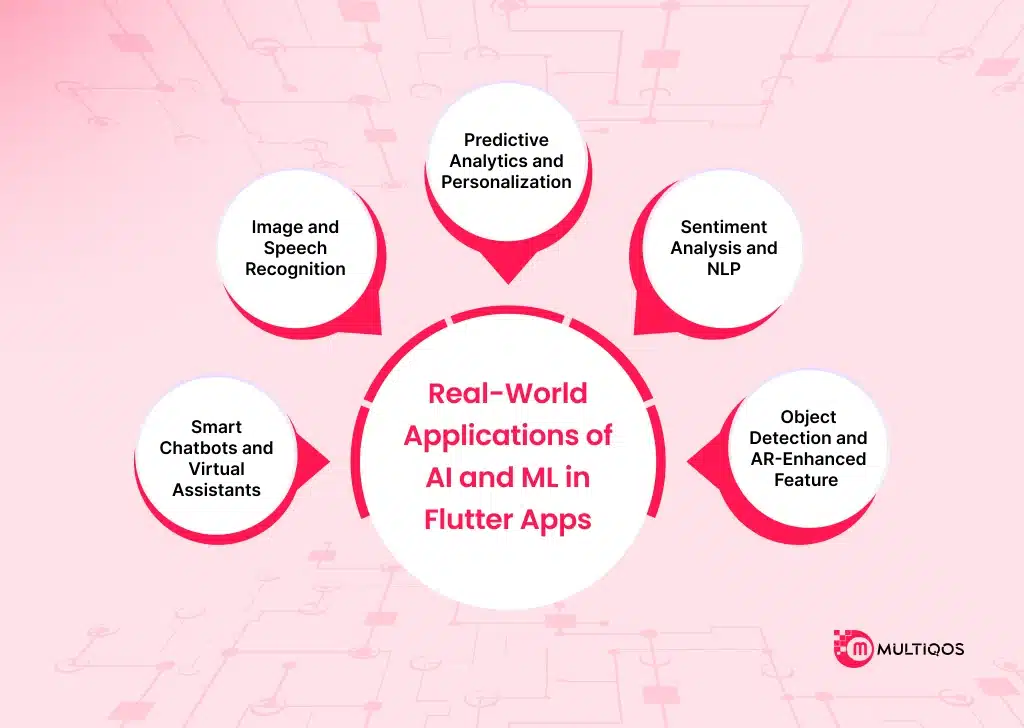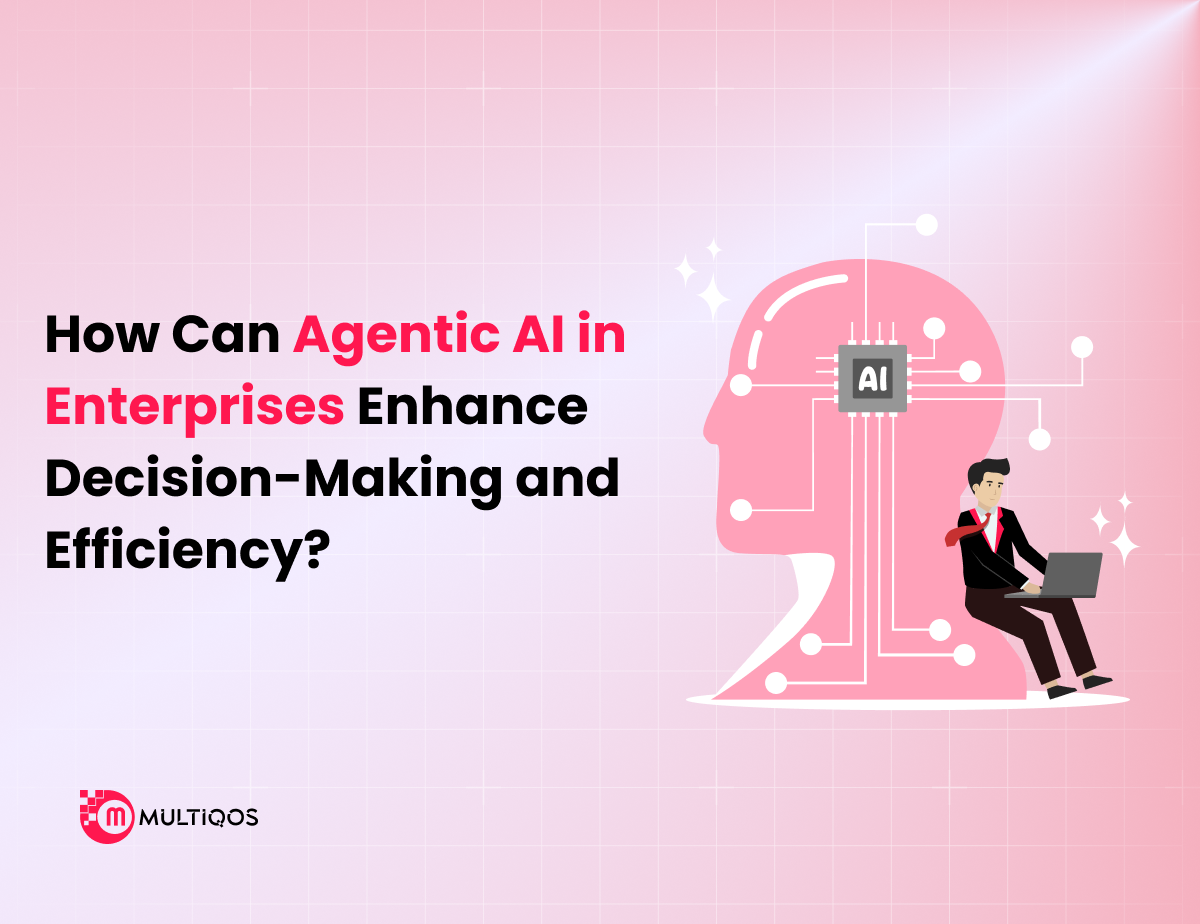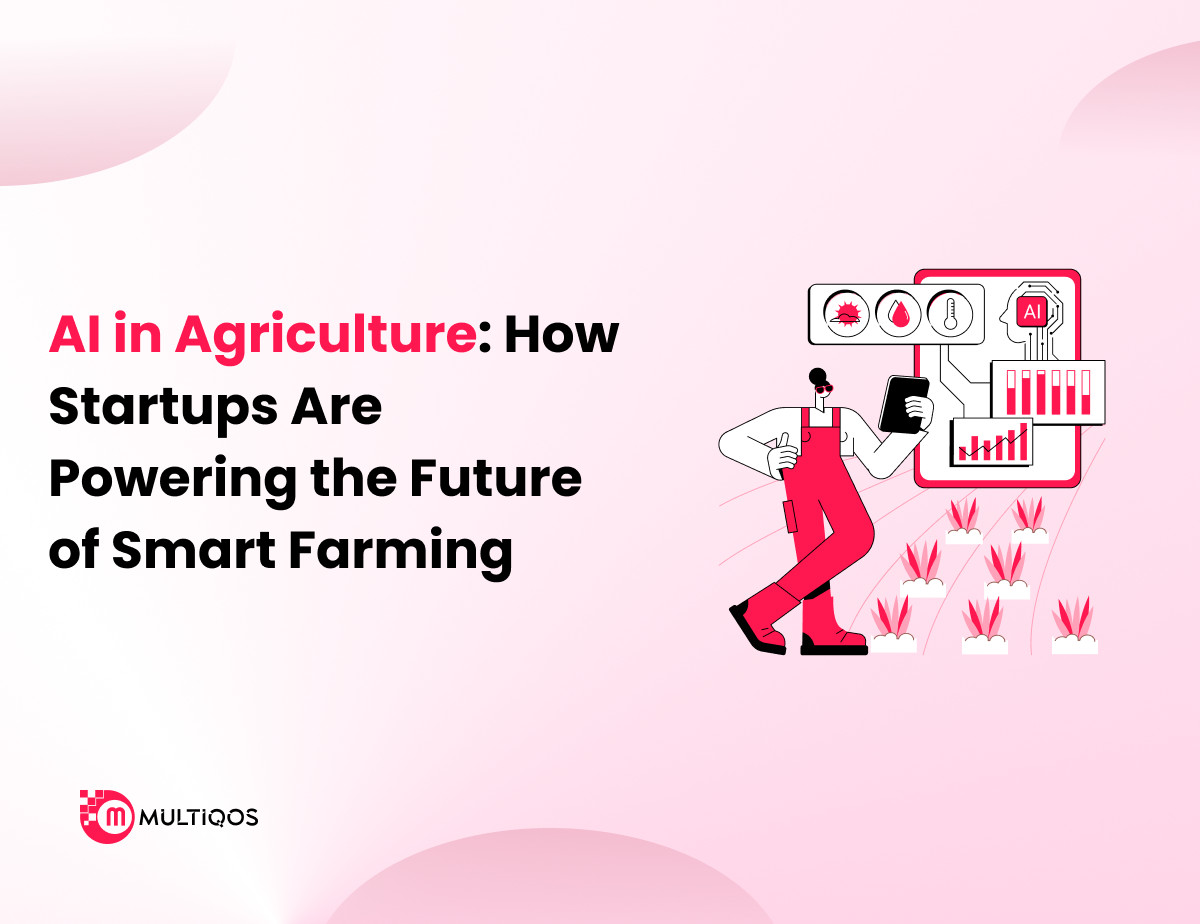Understanding the Role of AI and Machine Learning in Flutter Apps

Summary:
This blog explores the growing impact of AI and Machine Learning in Flutter Apps, highlighting how these technologies are reshaping mobile app experiences. From real-time data processing to intelligent automation, integrating AI into Flutter enhances functionality and user engagement. Whether you’re a developer or product owner, understanding this evolution is essential for future-ready AI development.
Introduction
Imagine a mobile application launching and calmly predicting your next move, responding nearly instantaneously in the same manner as a human would, even before you tap the screen. This scenario merges the realms of reality and AI, all achieved through combining AI and machine learning in Flutter Apps. With static mobile experiences falling behind and user expectations moving forward, adaptive, learning, and evolving systems are the norm.
It’s not simply about astonishing interfaces anymore. Google’s UI toolkit, Flutter, has transformed into a robust architecture for AI development and is leading in its field. In this blog, we will look deeper into the ways in which AI and ML are metamorphosing Flutter apps from basic mobile utilities into advanced, digital partners.
Why Combine AI and Machine Learning with Flutter?
Considering its ability to create expressive UIs, its fast performance, and the fact that it requires only a single codebase, Flutter is quickly becoming a favorite framework for mobile applications. However, its real strength is its integration with new technologies, most importantly, with AI and Machine Learning, thus making it future-ready.
With AI/ML integrated into Flutter, image recognition, voice assistance, text prediction, and personalization of content can all be automated, leading to an improved experience, which in turn increases customer satisfaction.
Merging AI and Machine Learning in Flutter apps makes development within the mobile industry easier. Technologies such as TensorFlow Lite and Firebase ML Kit ask developers to do less work by allowing models to be embedded straight into Flutter app development, making decisions autonomously in real-time without any delays in user experience. The combination of these technologies allows businesses to create applications that respond to the user’s environment, transforming the landscape of mobile AI development.
Role of AI and Machine Learning in Flutter Apps
1. Enhance User Experience Through Personalization
For Flutter applications, user behavior and preferences leveraging AI and ML can be deeply analyzed. This effectively crafts tailored recommendations for users. A good example is how a news app could construct unique articles for its users or how a shopping application can recommend products based on prior purchases. This makes the user experience efficient and tailored.
2. Enable Intelligent, Context-Aware Features
The addition of voice assistants, real-time audio translation, automated reply suggestions, and modification of the interface per the user’s behavior on AI integrated Flutter applications are some of the advanced features that can be added. Such features boost the interaction of the user with the application, thus enhancing the user experience significantly.
3. Predictive Analytics for Smarter Interactions
Through examining historical data and patterns, machine learning development models can anticipate user actions. Take, for instance, a fitness application that recommends workout routines based on the user’s previous activities, or a fintech application that predicts future expenditure. All these enable apps to assist users proactively rather than just responding passively to user commands and inputs.
4. Automate Routine Interactions
Artificial Intelligence can be used to power chatbots and virtual assistants within Flutter applications capable of automating response handlers like deal with Frequently Asked Questions, setting up calls, or guiding users step by step through different processes. This reduces the workload on human aides and simultaneously increases user experience owing to always available services.
5. Improve In-App Decision Making
Real-time data analysis becomes easier with embedded models of AI, making it possible for users to make informed decisions. A travel application can recommend cheaper routes, while a healthcare application can flag abnormalities in user metrics. These insights, powered by data, increase the usefulness of the application.
6. Enable On-Device AI for Performance and Privacy
With the help of frameworks such as TensorFlow Lite, developers are able to execute AI models on mobile phones without needing to communicate with servers repeatedly. This enhances responsiveness, eliminates delays, guarantees that essential functionalities remain operational without internet access, all while safeguarding user privacy.
7. Power Object Detection and Augmented Reality
The integration of computer vision models into Flutter applications enables real-time detection of faces, objects, and gestures. Such integration can be used in Augmented Reality applications, like in e-commerce for virtual try-on, which can be further enhanced with educational tools, or in responsive interactive games.
8. Boost User Engagement and Retention
Engaging users more effectively is made possible through smart and responsive apps that know how to “read” users. Retention rates and overall satisfaction can increase significantly with the timely provision of recommendations and proactive alerts through a personalized journey made possible with AI and Machine Learning.
Real-World Applications of AI and ML in Flutter Apps
With the increasing demand of app users, mobile applications are no longer required to respond–they need to learn, think, and adapt. Integrating AI and Machine Learning in Flutter Apps enables developers to provide smarter and context-aware experiences across platforms. A few of the most notable, in terms of the real world, are listed below:
1. Smart Chatbots and Virtual Assistants
AI chatbots integrated in Flutter applications are capable of managing customer service lines, attending to common queries, and even guiding users during onboarding. Use of NLP alongside NLP machine learning algorithms greatly improves these bots over time, lessening the load placed on people as well as increasing the efficiency and accuracy of automated responses.
2. Image and Speech Recognition
With TensorFlow Lite and Firebase ML Kit, developers can add features like image classification, facial recognition, and speech-to-text. Flutter applications have the ability to recognize commands, scan and sort images, or translate images into actions through powerful visual processing, executed effortlessly in the cloud or on-device.
3. Predictive Analytics and Personalization
AI frameworks have the ability to study user behaviors to anticipate needs, recommend content, or improve user experience within applications. From predicting the next song to be played in a playlist to estimating user churn, predictive analytics drives engagement and enhances user retention.
4. Sentiment Analysis and NLP
User-generated content is processed through natural language processing (NLP) which helps Flutter apps to understand tone, intent, and emotions. Flutter apps with integrated sentiment analysis functionalities can now automatically label feedback, escalate support tickets based on priority, or change the user experience depending on their mood, thus streamlining user engagement and interaction.
5. Object Detection and AR-Enhanced Feature
With machine learning and computer vision, Flutter applications can access a device’s camera to detect objects in real time. This makes possible augmented reality shopping, interactive education applications, intelligent navigation, and more—all made possible by lightweight on-device models.
Final Thoughts
With mobile applications improving over time, the integration of AI and Machine Learning in Flutter Apps is no longer optional—it’s a strategic advantage. AI shapes what users expect from mobile experiences by offering customization in real time, advanced automation, and predictive features.
Frequently Asked Questions
It can empower functionalities such as predictive analytics, real-time personalization, image recognition, and natural language processing.
Not fixed. The cost to hire AI developers can differ based on the project complexity, the AI features you choose to integrate within the project, and the engagement model.
Yes, no doubt. Sure, Flutter can be an excellent option for building AI-based applications, unlocking its ploygonic and multi dimensional flexibility, AI/ML libraries can be integrated easily which makes Forster ideal for cross-platform application development.
TensorFlow Lite, Firebase ML Kit, tflite_flutter, and OpenCV are widely used for AI/ML in Flutter development.
It’s true! If properly integrated, AI and ML technologies would dramatically improve productivity, enhance application performance, eliminate busywork, and provide contextual recommendations.
If you have made up your mind to hire machine learning developers, then ensure that they possess experience with mobile oriented ML frameworks like TensorFlow Lite or Core ML and that they are proficient in Python, data wrangling, and model serving.
Get In Touch








